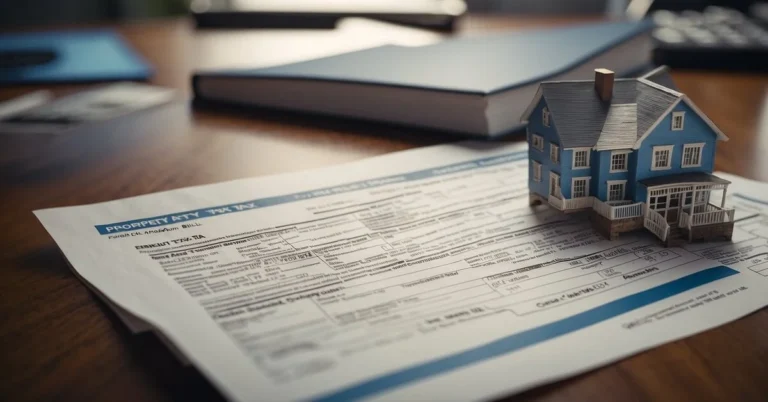This time we have something for our business owners, but you can also adapt it to your private life: Strategic Budget
Strategic budgeting is key to achieving long-term organizational success, focusing on aligning financial planning with overarching goals. This approach goes beyond traditional budgeting by mapping out a financial roadmap for sustained growth, precision in tracking goals, and adapting to change. It’s a game-changer for any business, from small startups to large corporations, providing the tools to prioritize investments, optimize resources, and anticipate future challenges.
Understanding Strategic Budgeting
Strategic budgeting integrates meticulous planning with a company’s financial framework to support long-term achievements. Let’s explore its nuances and compare it to traditional methods.
Strategic Budgeting vs. Traditional Budgeting
Strategic budgeting transcends the annual time frame, fostering alignment with an organization’s extended objectives. Unlike traditional budgeting, which often relies on the previous year’s numbers and makes incremental adjustments, strategic approaches consider a broader horizon. Traditional budgeting might take the form of incremental budgeting, where the focus is on making small modifications to the existing budget, without deep consideration for changing strategic goals. On the other hand, zero-based budgeting starts from scratch each period, compelling planners to justify each expense anew. Though resource-intensive, it enables more dynamic resource allocation towards strategic goals.
| Feature | Strategic Budgeting | Traditional Budgeting |
|---|---|---|
| Focus | Future-oriented, aligns with strategic objectives | Historically based, focused on incremental changes from past years |
| Flexibility | Adapts to changes, agile response to the market conditions | Fixed, with little scope for adjustment after finalization |
| Timeframe | Long-term outlook with continuous review | Typically annual, with a set start and end date |
| Goal Alignment | Budgets are directly tied to strategy and goals | Budgets are often created without directly considering strategy |
| Participation | Broad involvement across departments | Mainly top-down, with less departmental involvement |
| Performance Measures | Uses forward-looking KPIs and success metrics | Relies on historical data and variance against budget |
Key Concepts and Definitions
At its core, strategic budgeting is about linking funds to future visions. Specific strategic budgeting methods encourage proactive financial planning. For instance, rolling forecasts update projections regularly, keeping the budget aligned with strategic changes. Another method is zero-based budgeting, requiring justification for all expenses, ensuring they contribute to strategic objectives.
Importance of Strategic Budgeting for Organizations
I cannot overstate the significance of strategic budgeting for modern organizations. It equips them with a structured approach to fund their ambitions and adapt to market changes. By prioritizing financial resources effectively, firms can foster growth and innovation while maintaining stability—a principle that underscores the importance of having a long-term spending plan that meshes with overarching strategic targets. Strategic budgeting isn’t just about controlling costs, it’s about investing in the future.
Fundamentals of a Strategic Budget

Crafting a strategic budget is essential for aligning my financial resources with my long-term objectives. It’s not just about controlling expenses; it’s about guiding my company toward sustainable growth and success.
Components of a Strategic Budget
In constructing my strategic budget, I focus on several key components. First comes revenue forecasting, which enables me to predict future income with accuracy. I then balance this with cost estimations that consider both fixed and variable expenses. Investment planning is another crucial component, investing resources in areas that support my strategic objectives. Lastly, performance measures help me assess the effectiveness of the budget and adjust where necessary.
Setting Long-Term Goals and Objectives
My long-term goals and objectives are the stars I navigate by. They must be clear, attainable, and measurable. Whether I’m aiming to expand into new markets or develop innovative products, my goals set the trajectory for my budget, ensuring every dollar spent pushes my company toward its broader vision.
Aligning Budget With Organizational Strategy
The alignment of my budget with my organizational strategy is the linchpin of my financial planning. Each line item in my budget is carefully considered and must directly support my strategic plan. I allocate funds to initiatives that drive my company’s objectives, whether that be capturing new customer segments or pushing research and development.
By sticking to these foundations of a strategic budget, I place myself on a path to not just reaching but exceeding my long-term goals.
Strategic Budgeting Process

Navigating the strategic budgeting process is akin to charting a course for a ship’s voyage. It demands precision, foresight, and a systematic approach to ensure that financial resources align with strategic goals.
Planning and Preparation
In the beginning, I map out the strategic vision and assemble the necessary tools. This phase is all about laying the groundwork, so I identify my company’s strategic priorities and assess the current financial state. Effective planning entails a thorough understanding of both internal and external factors that could influence the budget.
Developing Performance Measures
Once the foundation is set, I establish concrete performance measures. These ensure that the resources allocated are targeted efficiently and that the success of the strategic budget can be quantified. Key performance indicators (KPIs) link financial input to strategic outcomes, giving me clear metrics to aim for.
Resource Allocation and Prioritization
With my KPIs at hand, the next step is judicious resource allocation. My focus here is to align monetary resources with my organization’s most pressing strategic priorities. I weigh the potential impacts and prioritize funding accordingly, ensuring that each dollar advances my overarching objectives.
Approval and Implementation
Securing approval is a critical bottleneck in the process. It involves presenting my strategic budget plan to the decision-makers—often a board or executive team. Receiving the green light means I can shift into action. The implementation plan spells out how and when the budget will be deployed, step by step.
Reviewing and Adjusting
A strategic budget is not set in stone. It’s vital for me to continually monitor performance against my established measures. By keeping a close eye, I can make timely adjustments, addressing any variances and ensuring the budget remains a dynamic tool that adapts to changing circumstances and keeps me on course toward strategic goals.
Tools and Techniques for Effective Strategic Budgeting

In my experience, having the right tools and techniques for strategic budgeting can streamline the financial planning process.
Budgeting Software and Tools
I’ve found budgeting software to be a game-changer. These tools allow me to integrate my organization’s financial data in one place. Modern cloud-based budgeting software, for instance, gives a comprehensive view across departments, making strategic adjustments easier.
Forecasting and Projections
Next, forecasting and projections are invaluable. I rely on accurate data analysis to predict future financial outcomes, which helps in solidifying the company’s financial planning. By using historical data, I can make informed projections that align with our strategic objectives.
Scenario Planning and Analysis
Scenario planning and analysis are key for navigating uncertainty. I engage in creating ‘what-if’ scenarios to anticipate possible future events. This helps me tailor our financial strategy to be resilient, ensuring we’re prepared for various outcomes.
Tracking and Reporting Mechanisms
Lastly, I pay close attention to tracking and reporting mechanisms. These processes allow me to regularly review and report on budgetary performance against our strategic goals. Efficiently tracking financial progress is crucial to making dynamic and responsive decisions.
Challenges and Considerations
When crafting a strategic budget, I’m acutely aware of the hurdles I might face. It’s a delicate balancing act, aligning short-term financial constraints with far-looking strategic goals. Let me walk you through some of the major challenges and key considerations that I keep to the forefront of my fiscal strategy.
Managing Uncertainty and Risks
In the realm of risk management, I’ve learned that uncertainty is a constant companion. Whether it’s a market downturn or another event like the COVID-19 pandemic, I’m always prepared to pivot. My approach involves a rigorous process for identifying potential risks and creating contingency plans to buffer the financial impact.
- Identify risks: Economic fluctuations, market trends
- Contingency plans: Emergency funds, diversified investments
Balancing Short-Term and Long-Term Needs
I find the tug-of-war between meeting short-term costs and investing in long-term planning to be particularly daunting. This means keeping a keen eye on the present without sacrificing the future—a juggling act of satisfying immediate expenses while reserving funds for long-term projects and growth strategies.
- Short-term: Monthly expenses, operational costs
- Long-term: R&D, expansion plans
Stakeholder Engagement and Communication
Effective communication with stakeholders is key; their insights and feedback are invaluable. I make it a point to ensure that stakeholders are informed and aligned with the budgeting roadmap, which often involves recalibrating goals and expectations to match fiscal realities.
- Informed stakeholders: Regular meetings, transparent reports
- Aligned expectations: Shared objectives, collaborative revisions
Legal and Compliance Factors
Lastly, navigating the intricacies of compliance with legal standards and regulations can’t be overlooked. It’s imperative to stay updated on legislative changes that could influence budgeting decisions, ensuring that each financial move is within the parameters of the law.
- Regulatory compliance: Adherence to laws, financial regulations
- Legal updates: Ongoing education, legal counsel consultation
Throughout these sections, I strive to be as clear and direct as possible. It’s about maintaining open communication lines and being as prepared as I can be for whatever might come down the pipeline, all while staying true to the strategic vision and remaining compliant with the necessary legal frameworks.
Case Studies and Best Practices
Exploring case studies and best practices in strategic budgeting reveals a wealth of insights. From innovative tactics to learned lessons, these pivotal elements drive success in financial planning.
Innovative Approaches to Strategic Budgeting
In my experience with strategic budgeting, incorporating innovation is key. I’ve noticed that the use of digital tools can greatly enhance transparency and efficiency. According to OpenGov, the best processes are inclusive and transparent, often integrating technology to provide real-time data which can be pivotal for adaptive strategies.
Success Stories from Leading Organizations
I have observed that organizations leading in their fields often share their successes, which can serve as a beacon for others. For instance, firms like McKinsey underscore the importance of aligning financial management with an overall strategy to drive success. They advocate for a balanced approach, highlighting that proper resource allocation is fundamental for achieving objectives. The Harvard Business Review discusses this balance between creativity and practicality in budgeting, as endorsed by forward-thinking leaders.
Lessons Learned and Recommendations
Learning from others’ experiences is crucial in avoiding common pitfalls. Based on the studies I’ve read, best practices often include a strong emphasis on collaborative budgeting. A study in the metro Houston area spoke to the benefits of collaborative approaches, which help integrate operational insights into financial planning. My recommendations? Embrace a culture of collaboration, focus on long-term objectives, and be ready to pivot when necessary based on informed insights.
The Role of Technology in Strategic Budgeting

Technology has revolutionized the way I approach strategic budgeting, bringing a new level of precision and efficiency to the process.
Evolution of Budgeting Software
My budgeting used to be a time-consuming process dominated by spreadsheets that were prone to human error. Now, the evolution of budgeting software has transformed my approach. Current solutions offer real-time data, which allows me to see the financial status of my project or business at any moment. This immediacy helps me make informed decisions, adjust strategies promptly, and stay agile in a dynamic economic environment.
Data-Driven Decision Making
The ability to leverage data-driven insights has been a game-changer for me. With advanced analytics, I can predict budgetary outcomes with greater accuracy. This not only helps in aligning my financial plans with strategic goals but also provides a level of detail that was previously unattainable. By understanding spending patterns and financial trends, I’m equipped to steer my resources toward the most promising areas.
Frequently Asked Questions
What are the key components of a strategic budget framework?
A strategic budget framework typically includes a clear articulation of the organization’s long-term goals, a comprehensive analysis of potential revenues and expenses, and a set of performance measures to ensure alignment with strategic objectives. It focuses on effectively allocating resources to support long-term goals and objectives.
How does the strategic budgeting process align with strategic management?
Strategic budgeting is a key component of strategic management, as it translates the organization’s long-term plans into financial terms. It ensures that every dollar spent is aimed at achieving strategic objectives, which might include market expansion, product development, or organizational restructuring.
How does the strategic budgeting process align with strategic management?
Strategic budgeting is a key component of strategic management, as it translates the organization’s long-term plans into financial terms. It ensures that every dollar spent is aimed at achieving strategic objectives, which might include market expansion, product development, or organizational restructuring.
I hope you found some inspiration or useful tips in our article on ’budget book ideas’! If so, I’d love to hear your thoughts and ideas in the comments below! And if you’re looking for more insightful content, don’t hesitate to explore our other articles:
- Financial Planning For Business Owners: Strategies For Success
- Holistic Financial Planning: Strategies For Full-Spectrum Wealth Management
- Fundamentals Of Financial Planning: Your Path To Financial Security
Your comments help us create better content for you. Happy reading!






